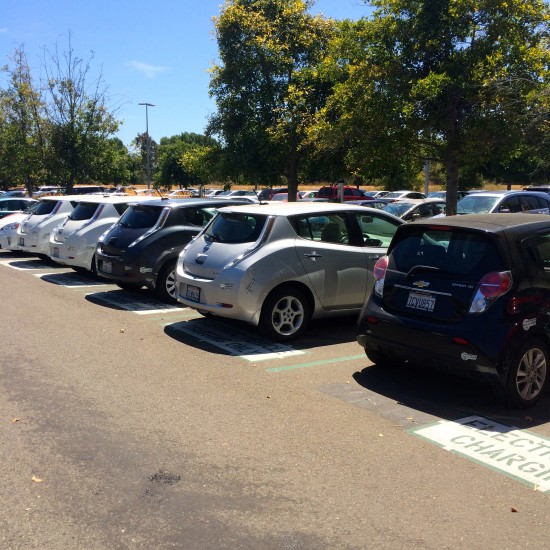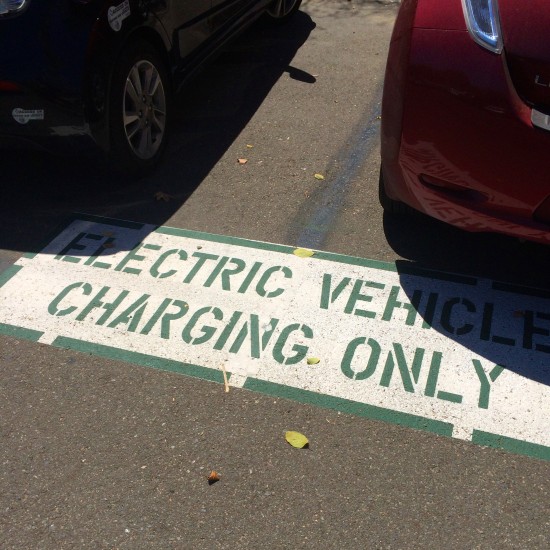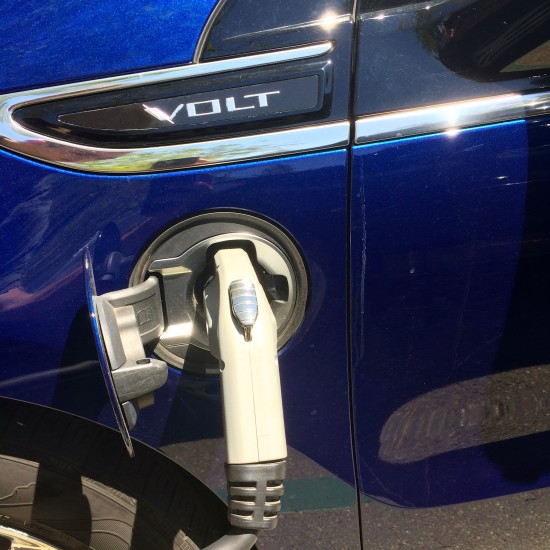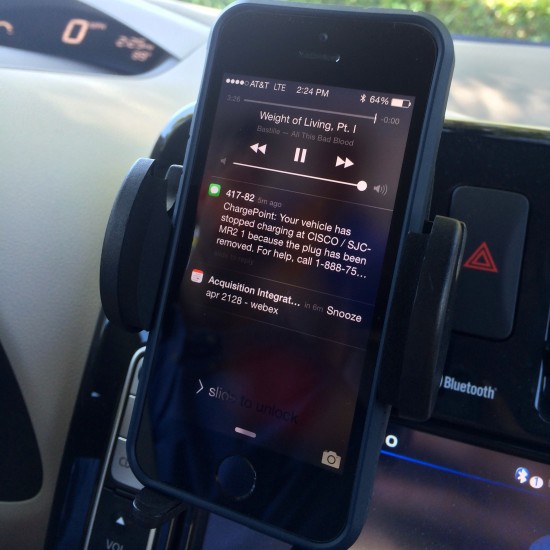James Lynch’s Nissan Leaf bolts down a shady street in San Jose, California, hardly making a noise as it zips between lanes at 40 miles per hour. With the quick flick of the transmission and a forceful press of a foot, the powder-blue car jumps ahead on the smooth pavement with the force of a small sports car. This isn’t a Mustang, though.
It’s an electric car, and James Lynch is one of thousands of Cisco employees worldwide committed to reducing their gasoline consumption and carbon footprint by changing the way they drive. Cisco is supporting employees like James by installing more electric vehicle (EV) charging stations on its campuses worldwide.

Cisco joined the U.S. Department of Energy’s Workplace Charging Challenge in March 2013, contributing to a national goal of achieving a tenfold increase in the number of employers offering workplace charging in the next five years. More than 55 companies have joined the Workplace Charging Challenge. According to the Department of Energy, there are 8514 public charging stations and over 20,000 charging outlets available to electric vehicle drivers in the United States.
Charging Cisco Campuses
Ali Ahmed, Senior Manager of Global Energy Management and Sustainability at Cisco, has seen a dramatic increase in Cisco’s efforts to provide charging not only in the United States, but around the world. Cisco is committed to improving the energy efficiency of its operations, which includes reducing greenhouse gas emissions. Giving employees the ability to charge their vehicles at work reflects that commitment and creates environmentally-friendly campuses and workplace practices.
“We’re now over 1000 employees globally using our EV charging stations,” Ali said. “Offering workplace charging enables people to make the decision to choose an electric vehicle.” There are over 235,000 electric vehicles on the road in the United States, many of which can travel 100 miles on one full charge.
On the San Jose campus alone, more and more people are using EV charging stations. James, Director of Cisco Commerce, was riding his motorcycle to work before purchasing his Nissan Leaf two years ago.
“When we started this, there were only a few people and just a couple of chargers,” he said. Since that time, when there were 75 users, the program has grown to 842 registered employees and 232 available EV charging ports in San Jose alone.

In fiscal year 2013, Cisco employees were able to save 64 metric tonnes of CO2e in greenhouse gas emissions by using electric charging stations. Without having to fill up at gas stations, Cisco drivers saved 23,085 gallons of fuel and $51,804 in fuel costs. “If I were to drive my regular car, I’d be spending $200 a month in gas,” James said.
Cisco has adopted Level-2 stations from provider ChargePoint in 10 locations from Amsterdam to Malvern, Pennsylvania. Level-2 stations charge vehicles at 240 volts AC, powering a fully discharged car in 4 to 6 hours. Ali says Cisco is planning to add Nissan fast-charging stations, enabling more users to charge in a new way.
“The fast charging station is able to charge a car in 10 to 15 minutes and works at 480 volts DC,” he said. “Our goal is to eliminate range anxiety” – a fear that prevents many drivers from choosing electric vehicles for their daily commute since they are unsure whether they will have enough charge to return home when leaving the office.
Electric vehicle owners apply for access to the stations by registering their vehicles with Cisco. Once they agree to the Good Neighbor Policy, which asks employees to promote respectful charging habits, their network charging card is enabled for Cisco’s network allowing them to use the stations on campus. By leveraging wide charging networks such as SemaConnect or ChargePoint, drivers don’t have to juggle special cards or mobile apps just for the Cisco stations.

In Amsterdam, Dirk-Jan Uittenbogaard sees the challenges faced by drivers who want to use the program but can’t always access an open station. “Here, we have somewhere between 60 and 70 plug-in hybrid cars and 8, maybe 9 charging stations,” he said. “There are only a few charging stations and way more people who want to use it.”
Ali said the Nissan fast-charging stations could be part of future solutions in Amsterdam. “People can pull up, get ten minutes of charge and leave again, which means one station can service more people per day.”
A Plugged-in, Connected Community
Because of the popularity of the program, finding an open charging station during the day can be a struggle. Sometimes drivers, especially those who just purchased an EV, leave their cars plugged in, treating the charging stations like parking spaces.
“In practice, people tend to fill their cars up,” Ali said. “But we designed the program to give people a couple hours of charge per day, which equals about 40 miles or so.”

But the community works together, making sure all drivers can get home at the end of the day. Though the Cisco charging station program is global, the community is tight-knit. Employees use Cisco’s internal collaboration tool, Cisco WebEx Social, to ask questions, voice concerns on forums, and share useful information and files with other drivers.
“I created a PowerPoint where you can change your phone number, print it, and put it on your dashboard,” Dirk said. “If someone sees that your car is charged, then they can send a text to your phone.” Dirk posted his slide to the WebEx Social community, where it was downloaded 258 times by other drivers.
In California, James is making use of ChargePoint’s mobile application and website, which connects him to the campus’s multiple stations. “Nowadays, there’s enough chargers around and apps that tell you where chargers are,” he said.
When his car is unplugged, he gets a text message notification and can use Chargepoint’s website to see a real-time view of charging stations, their availability, and the status of cars being charged.

Ali believes that EV charging provides commuters with an affordable and eco-friendly solution that’s bringing together people, processes, data, and things. “I think the key is, it was an opportunity we felt aligned with our sustainability goals,” he said. “But ultimately, what we want employees to look at is reducing the overall carbon associated with their commute.”
Dirk takes it a step further, using lessons learned from his experiences with his Mitsubishi Outlander Hybrid and applying them at home.
“The awareness that driving an electric vehicle generates, it makes you change behavior” he said. “In my home, I measure the electricity consumption of almost every outlet.”


Power plants, may develop based renewable energy that exists in all coastal areas. Mareomotriz energy is an energy with more useful than other renewable energies such as wind, Solar. This tidal energy is similar to the energy, wind and hydraulic energy, that turns mechanical energy and then .in electric power, that is the solution for the entire planet. The sea moves all the time, that mechanical energy reaches the shores of beaches does not know how to use it, and all the continents are surrounded by sea, the mechanical energy that is more powerful. Solution of all our problems, this conversion is what I know, not is that more want. My name is Pedro Vargas peruvar@hotmail.com